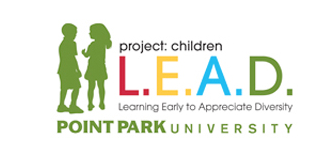Lesson 8: Kindergarten (Ages 5-6) Families and Neighborhoods Lesson Series

Project: LEAD | Curriculum | Resources | Workshops | Activities | About Us
Families
Teacher: Eleanor Vistein
Project Children L.E.A.D. Director: Dr. Vincenne Revilla Beltran
Subject Area: Diversity
Grade level: Kindergarten (Ages 5-6)
Length of Lesson: 60 minutes
Learning goals based on Pennsylvania Academic Standards, N.A.E.Y.C. Standards or Early Childhood Learning Continuum Indicators: The children will understand that every family is special and unique in its own way.
Arts and Humanities
9.1. E. Demonstrate the ability to define objects, express emotions, illustrate an action or relate an experience through creation of works in the art.
Language Arts
1.6. A.
-
Listen to others when they are speaking and demonstrate understanding of the message
-
Ask questions to obtain clarifying information
-
Listen to a selection of literature
-
Listen to a selection and connect similar experiences to real life experiences
Math
2.6. A. Gather, organize and display data on a bar graph and/or pictograph
2.6. B. Interpret information displayed on a graph
OBJECTIVES: After listening to the books, the students will be able to ask questions and/or make comments about the differences and/or similarities in the families depicted. By looking at the graph, the students will be able to tell how many people are in each of their classmates' families.
MATERIALS AND EQUIPMENT NEEDED:
-
Books:
-
Simon, Norma. All Kinds of Families. Albert Whitman & Company, 1976. ISBN: 0-8167-2472-5
-
Morris, Ann. Loving. Mulberry Books Publishing, 1994. ISBN: 0-688-13613-3
-
-
Graphing pocket chart or teacher made graph
-
Drawing paper
-
Multicultural crayons
-
Crayons
-
Photographs of all children in classroom for graphing
-
Counters (I used people from Lakeshore's "Family" theme box collection.)
-
A 12 inch by 12 inch muslin square for each child in classroom
-
Recording of "We are Family" by the Pointer Sisters
-
Family pictures of the student's families
ADAPTATIONS AND ACCOMMODATIONS TO DIFFERENTIATE INSTRUCTION:
For children who might not be living with their parents, a list of books follow that will help them to understand the various composition of family members. I also used these books for extension activities:
-
Davol, Marguerite. Black, White, Just Right! Albert Whitman & Company, 1993. ISBN: 0-8075-0785-7
-
Girard, Linda. At Daddy's on Saturdays. Albert Whitman & Company, 1987. ISBN: 0-8075-0473-4
-
Girard, Linda. We Adopted You, Benjamin Koo. Albert Whitman & Company, 1989. ISBN: 0-8075-8695-1
-
Hickman, Martha. Robert Lives With His Grandparents. Albert Whitman & Company, 1975. ISBN: 0-8075-7084-2
PROCEDURES:
REVIEW: Review the composition of the children's families by having them look at their family pictures. Ask the children, "Who is in the picture? What is your family doing in the picture?"
INTRODUCE: Tell the children that today they will learn about families in other parts of the world. Read aloud the book, Loving, as a springboard into the lesson.
DEVELOP:
-
Introduce and discuss as a group the pictures that depict parents from around the world taking care of their children.
-
Encourage students to share what in the pictures is similar and/or different from their families.
-
Pass out drawing paper, multicultural crayons, and regular crayons.
-
Have students draw a picture that includes all their family members.
-
Tell the children they may come to the music and movement area to creatively move to the music of "We are Family" to show how their parents take care of them.
-
Have students sit in the math area to listen to and discuss the book, All Kinds of Families.
-
Ask students how many people are in their family. Have them use that many counters to match one-to-one correspondence with the number of people in their picture.
-
Students will then count the number of counters on their family picture. They will graph the number of people in their family on a class graph by inserting their photo in the correct pocket that represents that number.
-
Ask questions such as, "Which family has the most people? The least? The same? How many more are in Courtney's family than in Michael's family?
ASSESS: The students will be assessed through observation and anecdotal note ' taking.
ASSIGN: We invited the children's parents in for a family sharing activity. Each parent brought in a covered dish that is a favorite in their family to share with the class. After we ate, each family created a square for a class quilt; they used crayons to draw, on a square of muslin, objects that represented what was important in their family. Provide opportunities for the children to plan in independent learning centers. The students can make family puzzles, family puppets, or family quilts in the art center. They can role play in the dramatic play area and write family stories in the writing center.
CLOSE: Tell the children, "Today we learned that all families are special. We also learned that some are big and some are small."

